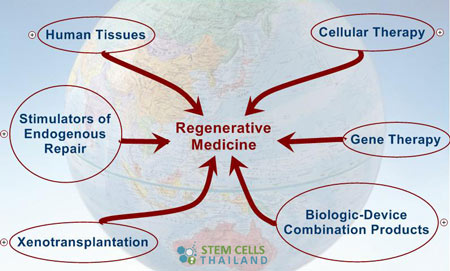Table of Contents

[/image][=video]
[/video]
Viscosupplementation: Shot of hyaluronic acid right into intra-articular area can recover the thickness and flexibility of osteoarthritic synovial liquid. HA plays an essential duty in shock absorption, lubrication, and the visco-elastic nature of the synovial fluid. Prolotherapy: Prolotherapy is the injection of a service to fix up an incompetent framework and advertise sclerosis at the injection site.
Greater than one treatment session may be called for prior to results are felt and, just like any therapy, results are not guaranteed. A stem cell does not serve a certain physical feature, however it can turn into a cell that does, such as a cartilage cell or a ligament cell. Physicians that make use of stem cell treatment think that, when placed into a specific atmosphere, stem cells can change to meet a specific requirement.
PRP can be injected or applied to the injured location during a surgery See PRP Treatment for Chronic Tendon Injuries To make PRP, blood is extracted from the client and after that processedoften utilizing a centrifugeto produce a focused option of platelets and plasma (PRP). See Platelet-Rich Plasma Injection Treatment: All PRP is not the exact same.
Inflammation boosts blood flow and draws in cellsgranulocytes, monocytes, macrophages and fibroblaststhat can fix and heal broken cells. During prolotherapy, a physician infuses an irritant right into the injured location, which momentarily raises inflammation.
Perimenopause Treatment

Prolotherapy often makes use of PRP as an irritant, yet prolotherapy is not by meaning a cellular therapy. The most generally utilized toxic irritant is dextrose, a straightforward sugar. Substances such as glycerine or saline may additionally be used.: Compared to various other regenerative medication therapies, such as stem cell and PRP injections, there is not a whole lot of medical study concerning prolotherapy and its effectiveness.
Different methods may be utilized to attempt to repair cartilage material, including yet not restricted to: Making tiny cuts or abrasions in the bone straight below the cartilage injury. The objective is that the blood from the damaged bone will facilitate new cartilage cell development. Transplanting cartilage from one more component of the patient's body, a contributor, or pet.
Regenerative medicine looks for to replace tissue or body organs that have been damaged by age, condition, injury, or genetic problems, vs. the existing clinical strategy that concentrates mostly on treating the signs and symptoms. The tools utilized to understand these results are cells engineering, mobile therapies, and medical tools and man-made body organs. Mixes of these approaches can amplify our natural recovery procedure in the places it is required most, or take over the function of a permanently harmed body organ.
When harmed or gotten into by illness, our bodies have the natural reaction to recover and safeguard. The appealing area of regenerative medicine is working to recover framework and function of broken cells and body organs.
Regenerative Therapy local to Romulus, Michigan
The goal of this method is to establish transformative health care services that will possibly heal formerly untreatable injuries and conditions. Tissue engineering is a method where biologically suitable scaffolds are implanted in the body at the website where new cells is to be formed. If the scaffold remains in the geometric shape of the cells that requires to be created, and the scaffold brings in cells the outcome is new tissue in the form preferred.

Millions of people have been treated with some kind of tissue engineered tools, yet the area is in its early stage. Numerous millions of adult stem cells are discovered in every human.
To discover even more regarding some of the encouraging researches and scientific trials involving cellular treatments, visit this site. In instances where an organ stops working, the predominant professional method is to transplant a substitute body organ from a donor. The principal challenges are the schedule of benefactor organs, and the requirement that the donor take immunosuppression drugswhich have side impacts.
Regenerative Therapy servicing Romulus
Regenerative medication covers a variety of disciplines in medicine, biology, engineering, and various other locations of scientific research. While there are just a limited variety of authorized regenerative medicine treatments for patients today, lots of prospective therapies are in scientific tests, or will certainly be quickly. These interpretations are meant to aid you recognize terms you might listen to as regenerative medication comes to be a widespread topic of discussion.
Biomaterials is a progressively sophisticated modern technology that blends concepts of design and biology to drive exploration and testing of therapies. The term extensively describes materials that are created for the purposes of interacting with living cells, tissues, body organ, and systems. Biomaterials can be originated from all-natural sources, like healthy proteins or sugars, or from artificial substances, like polymers, steels, or plastic.
One preferred category of biomaterials, called hydrogels, are water-based frameworks with customizable homes to house cells in 3D spaces that simulate problems in living tissue. Next-generation biomaterials can be customized in real-time to route exactly how cells function in 3D space. Disease modeling is making use of animals, stem cells, and engineered tools to study human illness without the demand for human subjects.
Stem Cell Therapy
Diet, way of living, exposure to sunshine, and aging are all variables that can create epigenetic adjustments. In the field of regenerative medicine, scientists study how epigenetic modifications add to disease-causing mutations. In one investigation, ISCRM researchers are part of an initiative to develop a genetics therapy to help young boys and canines with a rare muscle condition to walk and grow.
Navigation
Latest Posts
Regenerative Therapy local to Romulus, Michigan
Medical Group
Stem Cell Therapy